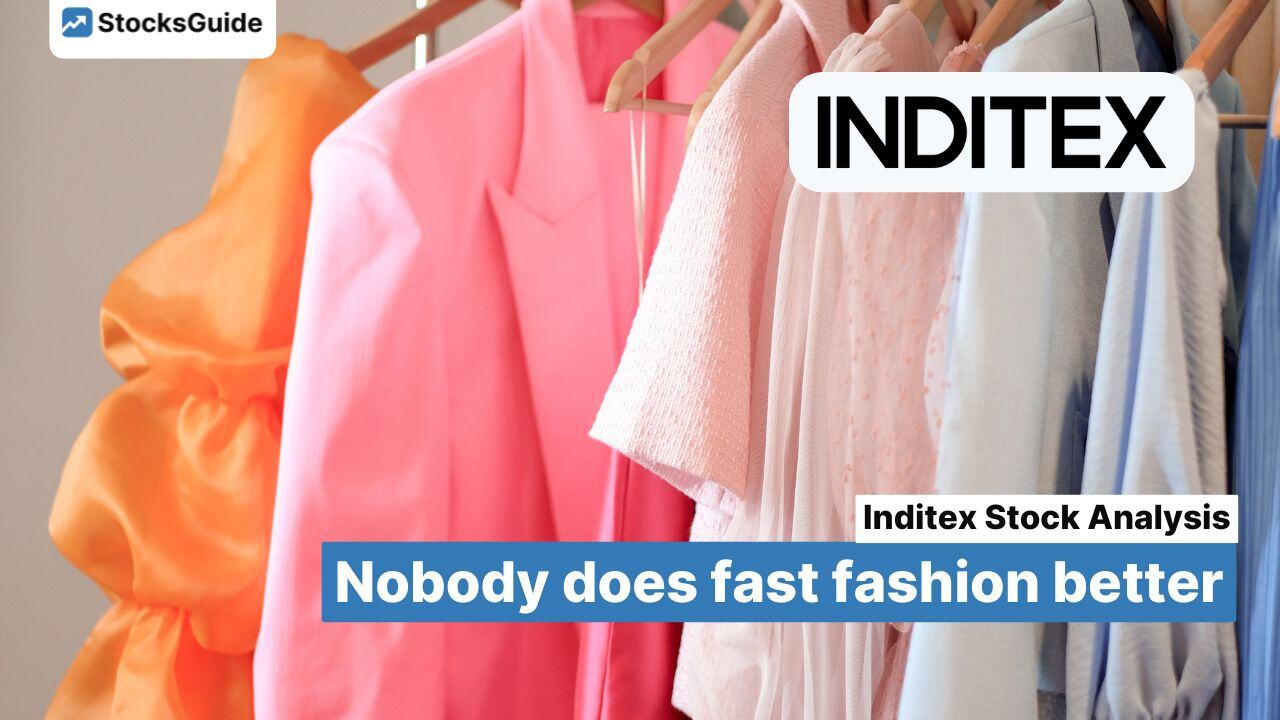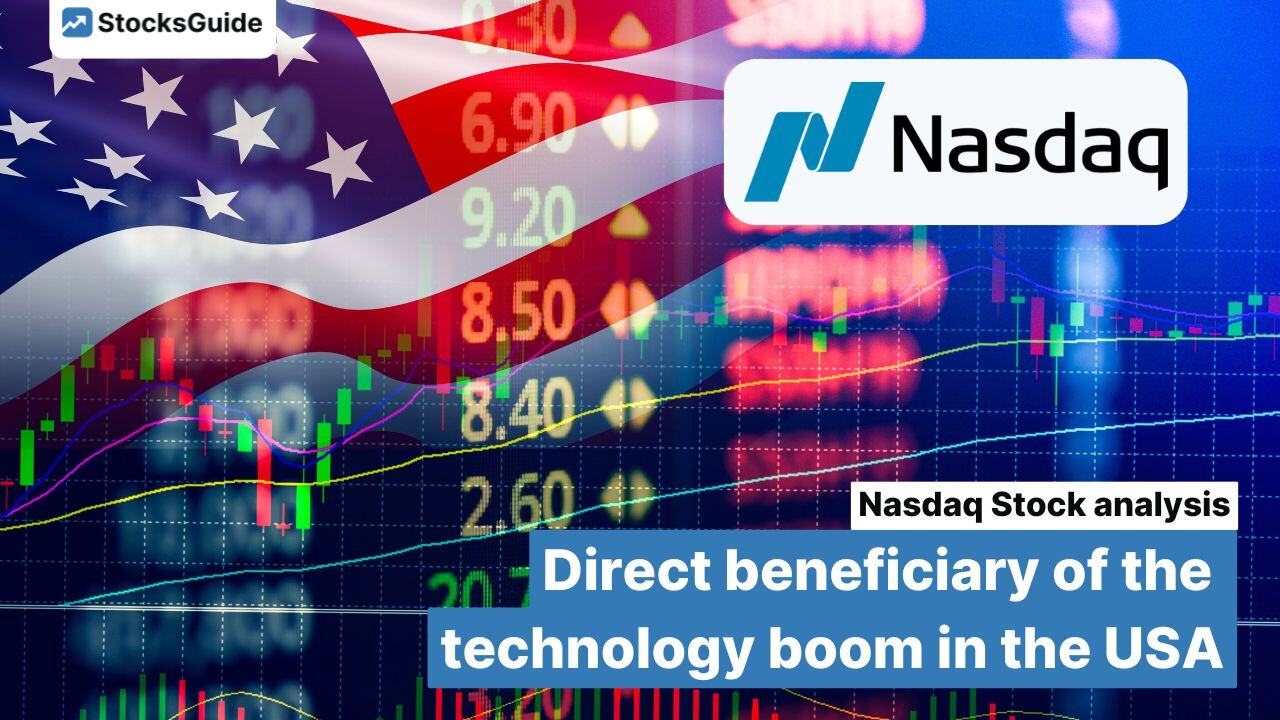Table of contents
- Company profile - Fast fashion market leader
- The latest Inditex quarterly figures from April 2024
- Inditex share forecast 2024/2025
- Important key figures of the Inditex share from the Levermann analysis
- Valuation of the Inditex share
- Conclusion on the Inditex share
The Inditex share (ISIN: ES0148396007), the world's largest player in fast fashion, has achieved an undisputed leading position over the years. The family-controlled company benefits from predominantly regional production, which offers strong competitive advantages thanks to short delivery times and a flexible response to fashion trends.

he share price also speaks for itself: over a ten-year period, the share price has doubled. The last three years have been particularly dynamic, accounting for more than half of the share price gains.
The Spanish company has not only visibly recovered from the coronavirus lockdowns, but has also recently delivered impressive growth despite increasing competitive pressure from new market players such as SHEIN, Temu and Primark.
The company's high valuation seems justified in view of the continued robust growth prospects. h will Inditex remain a pioneer in the fashion industry in the future? The following Inditex share analysis should reveal more.
The most important facts in brief
- Inditex is the undisputed market leader in fast fashion
- Predominantly regional production ensures strong competitive advantages
- Recent growth has been convincing, although competitive pressure is increasing
- The valuation is high, but seems fair in view of the growth opportunities
Company profile - fast fashion market leader
Inditex is one of the world's largest fashion retailers. To be precise, it is the market leader in fast fashion - the business model of fast fashion and vertical integration.
In essence, it is about reacting quickly to fashion trends and relocating production geographically close to the main markets, which results in shorter delivery times.
All of this, of course, at extremely attractive costs. Inditex mainly produces in the Spanish provinces. However, business is also done in nearby low-wage countries such as Morocco and Portugal.
In contrast to the competition, Asian production is significantly lower, which is a decisive advantage in terms of speed and also a possible reason for the company's unchallenged market leadership over the years.
The market is booming. The young generation in particular is the target group for fast fashion. No other system offers the latest trends at affordable prices better.
One business model, numerous store concepts

Inditex's main brands include Zara, Zara Home, Pull&Bear, Massimo Dutti, Bershka and Stradivarius, each of which appeals to different target groups and is characterized by specific store concepts and location choices. Zara, for example, is characterized by a minimalist store design and is often located in premium locations, while Zara Home focuses on home textiles and a homely atmosphere and is often located near Zara stores. Most recently, all store concepts reported visible double-digit growth, which indicates a consistently intact business model.
.jpg)
Geographically, Inditex continues to have a strong presence in Europe, particularly in Spain, its home market, as well as in America and the rest of the world. The number of stores shows an overwhelming majority of company-owned stores compared to franchise stores, which supports control over brand management and product quality.
However, the fast fashion champion is also growing strongly in online retail. In the last financial year 2023, it achieved a value of 9.1 billion euros, which corresponds to around a quarter of total sales. At 16%, this area is even growing significantly faster than sales in brick-and-mortar retail. The company is pulling out all the stops in online marketing. Its own app has more than 150 million active users and a quarter of a billion people who follow the Group on social media speak for themselves.
Thanks to its omnichannel strategy and flexible business model, Inditex has been able to maintain its leading position in global fashion retail quite well in the past. Above all, the strict focus on offering customers the latest fashion at affordable prices while at the same time paying attention to sustainability and efficiency in the supply chain can be seen as one of the key secrets to its success. But the competition never sleeps.
New intensity of competition
In recent years, competition in the fashion retail sector has intensified significantly due to up-and-coming companies such as SHEIN, Temu (international subsidiary of the Chinese PDD Holding) and Primark (subsidiary of AB Foods). All three have developed their own strategies to gain market share and expand their presence worldwide.
They therefore pose a serious challenge to established companies such as Inditex.
SHEIN, for example, has made a name for itself as a Chinese online fashion company with its aggressive pricing strategy and its ability to respond even faster to fashion trends. It relies heavily on digital marketing strategies and makes effective use of social media and influencer campaigns to appeal to young, trend-conscious customers. Thanks to comprehensive data analysis, SHEIN is able to quickly identify which products are in demand and produce and offer them in the shortest possible time. The company also benefits from its lean, purely online-based structure, which enables it to keep operating costs low and further reduce prices.
Primark, on the other hand, like Inditex, originally pursued a business model based on physical stores, but focused more on low prices. The Irish brand has established itself well with large stores in central locations and a wide range of fashionable and affordable clothing.
Temu, on the other hand, is a general store that primarily offers everyday essentials and lifehack products. But here, too, the aggressive expansion in Europe and America is convincing.
How long this success will last is probably also a question for the regulators.
However, the battle between the rivals is primarily at the expense of smaller retailers outside fast fashion. The Kaufhof/Karstadt example clearly shows who is suffering the most. Inditex still comes off relatively well here due to its strong profile. Above all, it offers customers advantages that can still be described as regional production - fast fashion trends and good quality at reasonable prices. Here there are differences to SHEIN, Temu and Primark, which do not necessarily reach the same level.
Nevertheless, the rise of these new players should be closely monitored.
The latest Inditex quarterly figures from April 2024

The figures for the first quarter of 2024, which ended on April 30, 2024, speak for themselves. Sales increased by 7 percent to 8.2 billion euros. Net profit saw double-digit growth of 11% to 1.3 billion euros. The store expansion is continuing at full speed. The first store in Uzbekistan was opened in February. At the end of the first quarter, the Spanish company operated 5,698 stores - 10.5 percent more than in the previous quarter.
This lays an important foundation for future growth.
It is also positive to note that sales growth in the first month after the end of the quarter accelerated to 12% compared to the previous year. The growth momentum has thus increased.
Positive impetus is also coming from the online business and warehousing.
Inditex share forecast 2024/2025
Inditex is also expecting further growth, although no specific forecasts for the key financial figures for 2024/2025 were announced in the last quarterly report. It only mentions an annual growth in sales space of 5% until the end of the 2026 financial year.
In addition, a negative currency effect of 2% is expected to have a negative impact on the sales base.

The analysts are more specific.They see continued double-digit growth of 10.4 percent in the 2024 financial year. In the following years, sales are expected to increase by a high single-digit percentage each year - to over 50 billion euros in the 2029 financial year. Within five years, sales would increase by a good 15 billion euros or almost 42 percent.If this happens, Inditex is likely to continue its historic growth.

Earnings are likely to develop similarly positively, with a slight increase in margins foreseeable.But let's get back to the current forecasts.At EPS level, growth of over 30% is expected for the 2024 financial year.In the end, earnings per share of EUR 1.73 could be achieved.The P/E ratio would then be 25.8. By 2029, the value could then - according to the analysts - rise to EUR 2.83 per share.At 63.6%, the total growth in the period under review would be significantly higher than the sales growth of 42%.
Important key figures of the Inditex share from the Levermann analysis
The Inditex share is also convincing in the Levermann analysis.With six points, almost half of the 13 possible points are achieved.

The share is convincing in all fundamental key figures.The expected earnings growth of 18.2 percent rounds off the share's profile as a profitable growth stock.But there are also many positive things to report from a technical perspective.For example, the share price has performed well in the short and medium term, rising by 21.1% and 37.1% respectively.The share is trading at an all-time high.The profit revision - i.e. the change in analysts' expectations with regard to EPS development over the last four weeks - is also providing positive impetus.The company's greatest weakness at present is probably its valuation, which can certainly be described as high.The expected P/E ratio is 24.6, while the P/E 5-year ratio, which is based on the last three years and the next two years, is significantly higher at 28.5.The expected P/E ratio shows a clear downward trend.And analysts' opinions on EPS in 2029 could also cause the P/E ratio to fall further to a value of 16.
Valuation of the Inditex share

At first glance, the valuation of Inditex shares is not favorable with an expected P/E ratio of 24.6.However, if one considers the sales growth of 9.1% in the last twelve months and the expected profit growth of over 18%, this view is put into perspective.Above all, the historical growth trend confirms this impression.Over the last ten years, the company has delivered high single-digit sales growth and EPS has even risen slightly faster.
The latest quarterly figures show positive momentum that is slightly above the average of recent years.Store expansion is also making good progress.The rise of Chinese competitors such as Temu or SHEIN is not currently reflected negatively in the key financial figures.However, it is important to continue to monitor this development.
Conclusion on the Inditex share
Despite the increased valuation, Inditex shares could still be an attractive option for investors looking to invest in the global fashion retail sector.Above all, the positioning as market leader and the focus on core competencies in fast fashion should be a convincing argument for investors.The outlook for the year as a whole has recently remained solid.Growth in the high single-digit percentage range is expected - despite increasing competitive pressure from up-and-coming competitors such as SHEIN, Temu and Primark.The economy could also improve in Europe.
Inditex is thus demonstrating that it is able to adapt quickly to changing market conditions and exploit competitive advantages through its predominantly regional production.In contrast to H& M, this strategy is paying off, as can be seen from the share price performance and key operating figures.
Although the valuation of the share is high, it appears justified in view of the robust growth prospects and the solid corporate strategy.Long-term investors could therefore continue to see Inditex shares as a promising option.

Analysts have a similar view of the potential of the textile share. Just under half recommend buying, 41% recommend holding. However, the average price target of 47.43 euros appears to have already been largely exhausted. Further store expansion and the development of Chinese competitors Temu and SHEIN are likely to provide new impetus.




